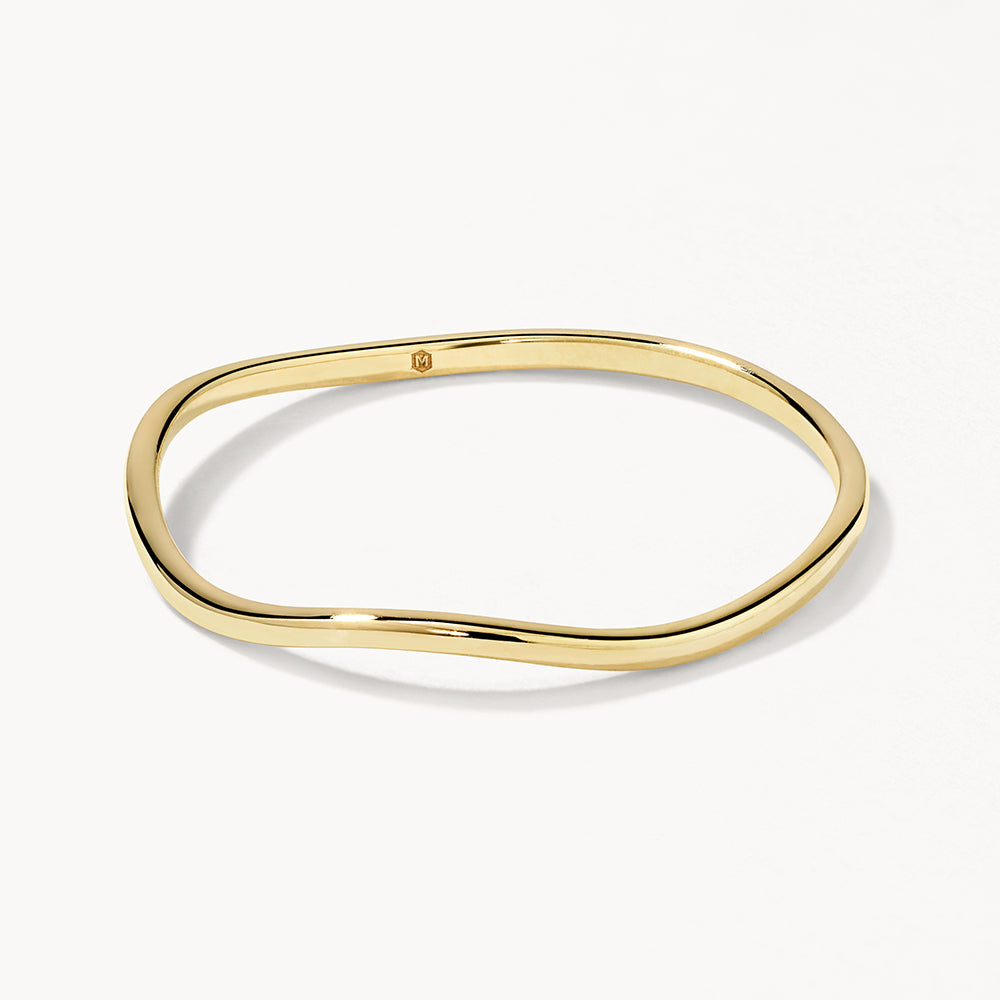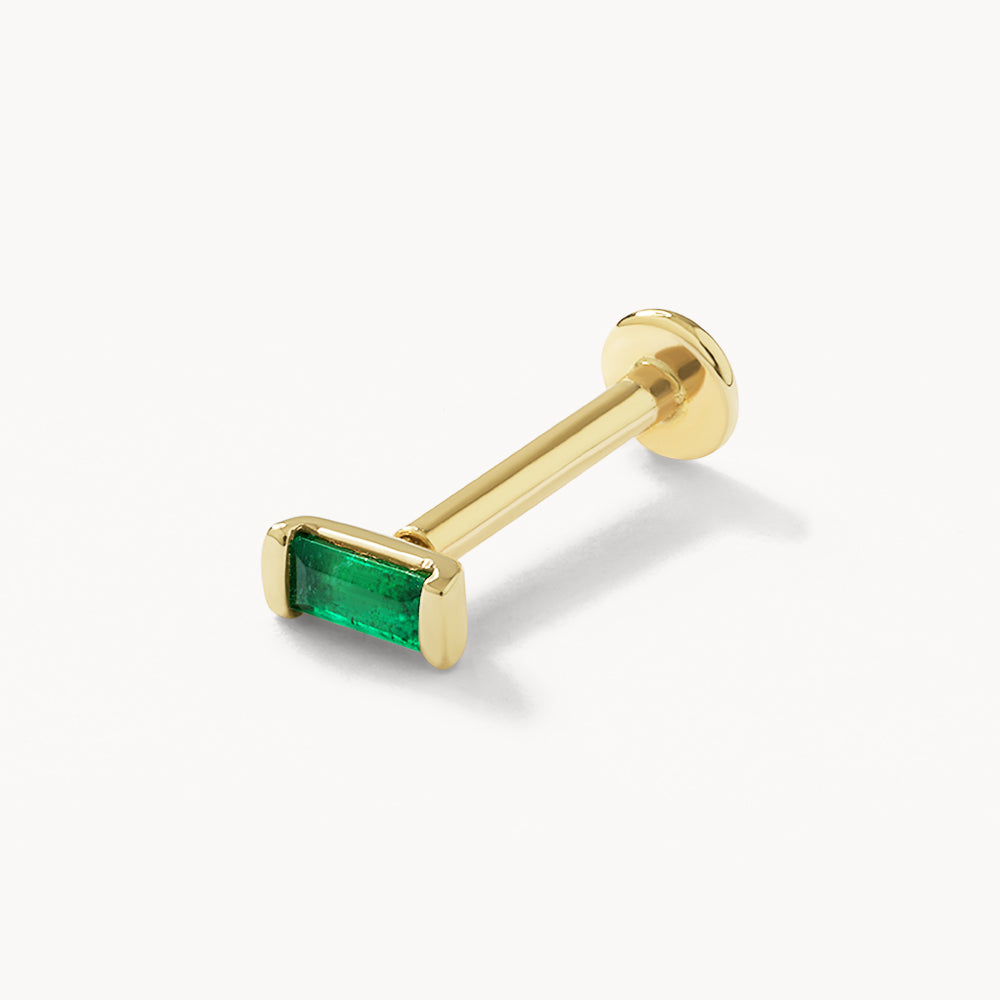The History and Symbolism Behind Emerald Jewellery
There’s no denying it, emerald green is the colour of 2023 (though admittedly Barbie pink really stole the spotlight for the while there). Not just a trend in the fashion realm, emerald is dominating the fine jewellery world as the coloured gemstone of choice.
To celebrate our new-season emerald drop, we delved into everything emerald – including where it comes from, what it means, and how to style it.
Intrigued? Read on to learn all about this precious gem.
Where does emerald come from?
Emerald is a naturally occurring, precious gemstone that’s formed through special geological processes under the Earth. Emerald is a gem-quality crystal within the beryl family of minerals (you might be familiar with its cousins, aquamarine and morganite). Emerald’s distinctive, deep green hue is due to trace elements of chromium or vanadium that become part of the gem’s chemistry while it’s forming.
Their formation begins with the development of beryllium-rich pegmatite veins. Pegmatites are formed from the cooling of highly fluid and water-rich magma deep within the Earth's crust. As the pegmatite veins cool and solidify, fluids rich in chromium and sometimes vanadium infiltrate the fractures and cavities within the rock. Chromium is responsible for the green colour of emeralds, while vanadium can contribute to colour variations and intensity. Over a long period of time, and with specific temperature and pressure conditions, these elements combine and interact, leading to the growth of emerald crystals.
TL;DR Basically, it takes unique and highly specific conditions - and a long time - for natural emeralds to form, which all contributes to the value and rarity of these beautiful stones.Emeralds can be found in several places around the world, including Brazil, Zambia, Zimbabwe, and Afghanistan. But probably the most prolific source is Colombia, and this is where the most sought-after natural emeralds are often found, which are prized for their intense colour and enhanced clarity. It’s important to note that natural emerald generally contains a significant amount of inclusions due to the way it’s formed. You shouldn’t expect the same kind of clarity and sparkle that you would from a diamond. However, unlike diamonds, an emerald’s inclusions do not detract from its perceived beauty. Instead, it’s the vibrant, deep green colour of emerald that is most prized.
What is the history of emerald jewellery?
Emeralds have been loved and mythologised for millennia, being discovered and revered by a number of ancient cultures, including Babylon, Greece, and Rome. Probably the most infamous emerald fan in history, though, was the Egyptian Queen Cleopatra. She is known to have adorned herself in the brilliant green gemstones frequently, sourced from her own emerald mines in Egypt (goals, much?).Their popularity has continued over the centuries, and emerald remains one of the most prized and precious gemstones. Today, it’s equally beloved as a meaningful talisman, a centrepiece for an engagement ring, or simply as a fresh pop of colour in a modern jewellery stack.
The geometric trend in fashion and design has contributed to the surge in popularity of square edge jewellery, aligning accessories seamlessly with current aesthetics.
What is the meaning of emerald jewellery?
As a gemstone with ancient recognition, emeralds are laden with symbolism and meaning. They are believed to represent renewal, new beginnings and rebirth, tranquillity, inspiration, love, and truth. Many people and cultures also associate the rich green hue of emerald with nature, and see the stone as a reminder to cherish the beauty of the natural world. In an engagement ring, emerald is thought to symbolise faithfulness, harmony, and true love. Emerald is also the birthstone for May and the Taurus zodiac, making it a particularly poignant stone for those born in May or under the Taurus sign.
Shop The Look

Are emeralds lucky?
People across many cultures hold true to the belief that emeralds can bring good luck, prosperity, and success. Some also believe the stone to possess certain healing powers. Of course, beliefs and concepts of luck can vary between people and cultures, but if you love the idea of wearing emerald jewellery to channel positive energy and manifest good things, it just makes your forever-pieces feel all the more special.
How to style emerald jewellery:
Don’t let the vibrant hue of emerald fool you – this precious gemstone is versatile to style in a multitude of different ways. Whether you’re looking for inspiration to style emerald rings, emerald earrings, or any emerald jewellery, we have you covered with our top styling ideas.
Take a minimalist approach:
Allow your natural emerald piece to be the focal point of your jewellery look, by styling an emerald necklace or emerald huggie earrings on their own. Pair back with an outfit in neutral tones to really let the rich green colour pop.
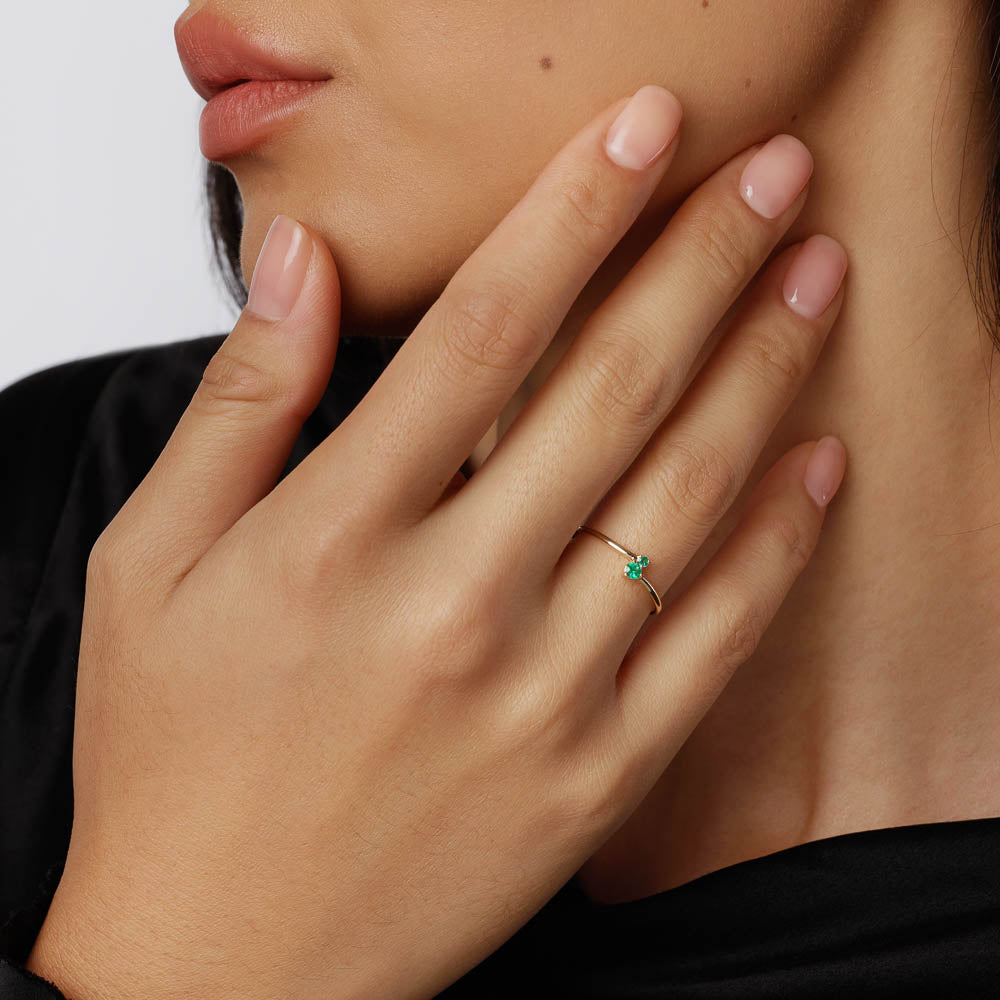

Stack with gold:
Emerald and yellow gold are made for each other, with gold creating the perfect contrast to bring out the brightness of your emerald. Stack your emerald ring with gold rings, or add a dainty emerald helix earring to a golden ear stack.
Go totally green:
Draw attention to your precious emerald pieces by stacking two or more styles together. A curated ear stack dominated by deep green emerald is a uniquely modern way to wear this trending yet timeless gem.
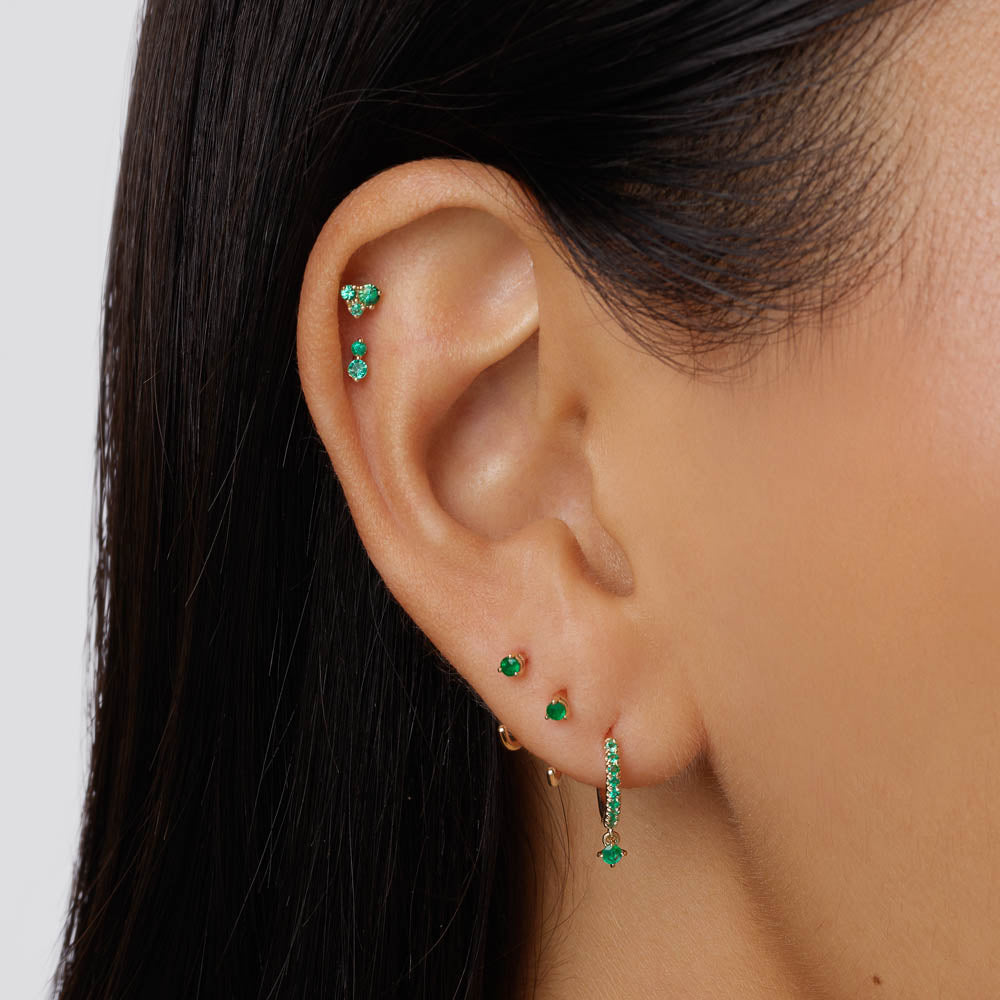
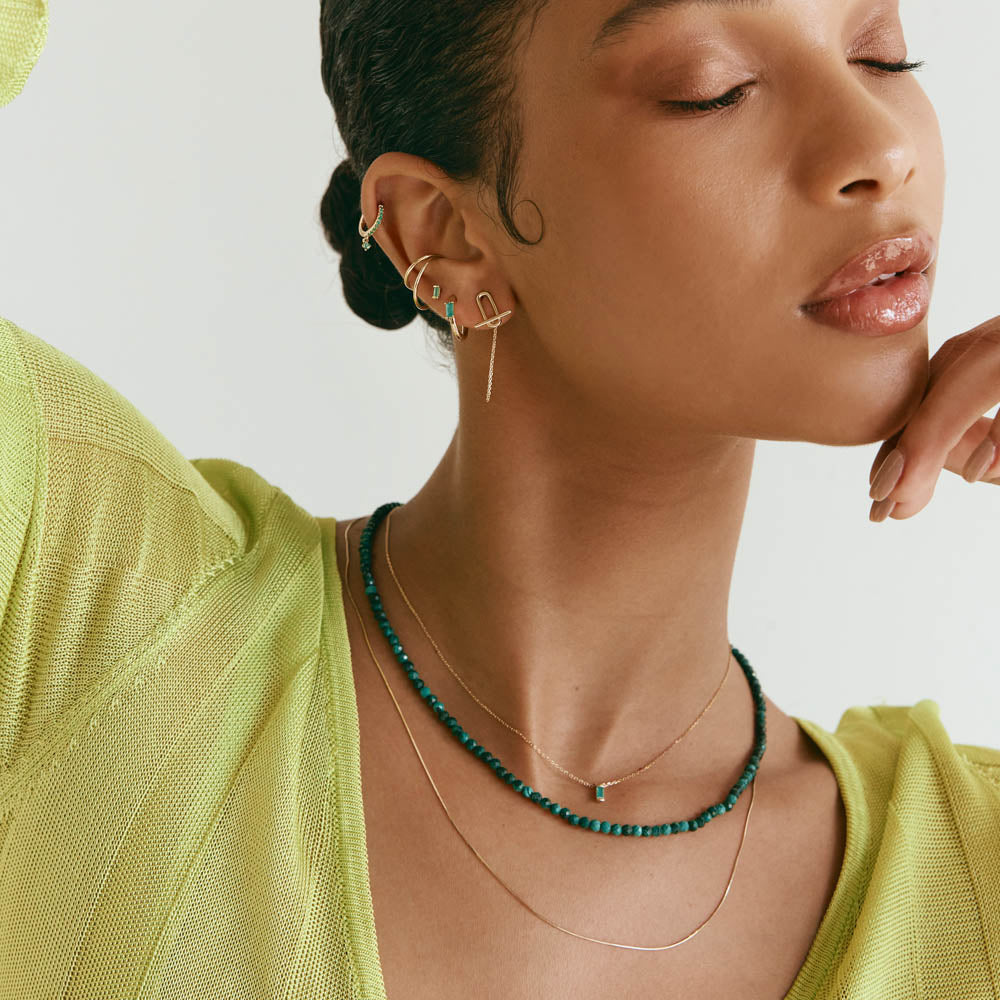
Mix it up:
Emerald pairs perfectly with diamond jewellery, pearl jewellery, and other coloured gemstones. Stack emerald and diamond pieces for a mix of vibrant colour and sparkle; or pair your emerald with gems in contrasting shades for a bold eclectic look.












